Saving the Silverswords
High atop the House of the Sun lies a mission to preserve and protect the rare and enchanting plant that exists only on the majestic slopes of Haleakalā.
BY Dina Ruiz
Halfway between Maui’s magnificent beaches and heaven sits Haleakalā. Whether you know it as a volcano, a mountain or a sacred energy source as explained in mo‘olelo—stories passed down through generations of native Hawaiians—it is undoubtedly true to its name, the House of the Sun. Here, the demigod Māui wrangled energy from the sun, Lā, making the days longer as a favor to his mother. Untold generations later, people worldwide enjoy the fruits of Māui’s efforts.
Spectacularly lunar, geologists consider it one of the largest dormant volcanoes in the world, making up more than 70 percent of the entire island of Maui. If you are at a resort or restaurant, you’re likely standing on part of Haleakalā now. At the top, where the National Park Service manages this astounding site, and visitors enjoy soul-shaking vistas, is but five percent of the entire volcano.
Sarah Carter, the Supervisory Interpretive Park Ranger, says being at her “office,” the visitors center located more than 7,000 feet above sea level (a second office sits higher than 10,000 feet) never gets old. “The first time I saw the park, I drove up the mountain alone. At every turn, my eyes were darting between the ocean below and the mountains above, and it was hard to watch the road. It was my first time in Hawai‘i, and I could hardly believe what I was seeing saw. I had the biggest smile on my face the whole drive.” That awestruck grin is seen on the faces of park staff when the million or so people who visit every year arrive.
Haleakalā National Park makes up more than 50 square miles, most of which is wilderness. It reaches from what appears to be the middle of Maui toward the east, announcing itself with lava flow emanating from the flank of the park, frozen in time where it met the ocean after an eruption more than 400 years ago. Around the bend, it slopes into the Kīpahulu Valley, flirting with the beauty of Hāna and teeming with verdant greenery and endangered hook-beaked birds. Streams and waterfalls remind you that it still rains here, seemingly above the clouds. Other trails up top lead you to quaint human imprints in the form of rentable cabins created by the Civilian Conservation Corps almost 100 years ago. “If you make the almost nine-mile trek across the crater to the Palikū cabins and campground, you land in yet another world of lush green plants, birds and towering green cliffs,” Carter advises. Biological science technician and Hawai‘i native Leila Morrison says the park encompasses much of what makes Maui unique. “Getting to experience native habitats, cultural and biological landscapes—it is a blessing. It reminds us of what a lot of our ecosystems should look like.” She credits the synergy in her homeland for making this park extraordinary. “In Hawai‘i, we refer to it as bio-cultural: Everything is connected.”
The main draw, the crater itself, is what geologists call an “erosional valley.” It is a whopping 7.5 miles long and 2.5 miles wide. When you think of a volcano crater, you might not imagine much more than brown dirt and great views. But when you arrive at the summit, you’ll need a minute or two to take it all in. Turning 360 degrees, shades of sable, black and deep purple welcome you into the vastness. The scenario presents as a magnificent, enormous photograph with areas appearing as if they’ve been smeared by an errant thumbprint, leaving large swaths looking blurry due to the changes in the soil. Then it’s back to craggy, jagged cliffs and ledges dotted with the unexpected. “Where so much of the park is lush and green, the crater is a beautiful and surprising combination of reds, oranges, and purples. The [volcanic geological features] dominate the landscape; and from the top, it seems like nothing could live in such a harsh environment. But a hike into the crater reveals it's full of life. A trip to the crater never ceases to amaze me. It's incredible,” Sarah Carter explains.
Humanity gathers at the crater in the early morning to witness the night sky being blasted by sunlight and again in the evening to watch the orange arrows fade as the House of the Sun goes to rest. This is a place of pure dichotomy: fierce wind and startling stillness, ancient silence and the modern chatter of birds and people, sunshine and rain clouds, silver linings and silverswords.
The rare and enchanting plant that exists only on Haleakalā is known as the silversword, but the Hawaiian name is ‘āhinahina, meaning “very gray.” A great number of visitors seek this mysterious plant, which blesses the world with a show that inevitably leads to its death. Park biologists, who see the plant daily, still talk about it as if it’s mystical. “It is one of the only plants that grows here. It is by far our most charismatic plant in the park, and the fact that it is so accessible—you can see them right in front of the visitors center—makes it a very visible species for us and very much a priority for us to protect in that sense, as well,” says biologist Woody Mallinson, the Natural Resource Program Manager. “When it flowers, it’s amazing. There’s a flowering stalk covered in hundreds of daisy-like flowers, and if you’re downwind of it, there is a fragrance,” he adds. “The flowers last for a couple of months, then go out in this huge blaze of glory."
Biologist Leila Morrison, who’s worked at the Park since 2019, concurs that this is no ho-hum house plant. “The symmetry is incredible. The leaves look like swords. They round themselves around the new growth; if you can look down into it, it’s breathtaking.” She credits the plant’s heartiness and its mystery. “They flower only once in their lifetime. It can take decades. We are still researching what triggers their flowering,” she adds. “It took millions of years to evolve. This plant evolved to survive in these amazing conditions. Low water, freezing temps, high solar exposure.” She and other park employees encourage visitors to see the plants up close but cautiously. “There are a lot of ‘āhinahina (silversword) keiki (offspring). They are tiny and hard to see. It’s important to stay on the trail and not trample them because people could step on them and interrupt their reproductions.” Dr. Paul Hosten, the Integrated Resource Manager at Haleakalā National Park, emphasizes that everyone can play a role in conservation at the park and when they’re back home. “Apart from cleaning your gear of soil and non-native seeds and staying on the trail so as not to trample fragile seedlings, probably the top take-home message for all locals and tourists alike is to realize how climate change threatens all our resources at Haleakalā National Park, cultural as well as natural. Many of our natural resources are threatened by reduced rain and increasing temperatures, from the dry desert-like crater to the wet forests.”
Solving the puzzle of our changing weather while protecting the silversword is a race against the clock. The species is declining in the wild. Haleakalā biologists work with other agencies, including the University of Hawai‘i, to ensure this precious plant survives for future generations. “Big projects include researching silversword habitat and physiology, but ultimately figuring out the reasons behind decline populations,” Leila Morrison says. And that comes down to, in part, dealing with nature’s volatile new shifts. “The Haleakalā silversword no longer thrives where it once did so well thirty years ago. Much of our out-planting/restoration efforts now occur at higher elevations where the plant can complete its life cycle under more favorable conditions,” says Dr. Hosten.
The majestic plant isn’t the only life form being threatened. “Forest birds in our higher elevation rainforests are close to extinction because avian malaria-bearing mosquitoes can survive at ever higher elevations consequent to climate change. The hotter and drier conditions across the park landscape bring fire threat to areas not previously considered fire-prone, for example, the summit area so rich in cultural resources and historic buildings,” Dr. Hosten explains. “The park is creating a Climate Change Adaption Plan to maintain its resources and facilities on our beloved Haleakalā landscape. The only way we can achieve this objective of looking after our resources is with the support of our public and partners, including other federal agencies, state agencies and non-governmental organizations (NGOs)—teamwork!”
One NGO is dedicated like no other. Friends of Haleakalā National Park, known locally as FHNP, has dozens of active members who definitely “walk the walk.” FHNP Vice President Mary Santa Maria gets her hands dirty at least once a month in honor of conservation. She’s been with the FHNP for fifteen years and is the nursery coordinator, completing whatever tasks the Park Service asks for, from scrubbing to seeding. “Whatever the vegetation and horticulture departments ask us to do,” Santa Maria says. “That could be washing pots … repotting, seed collection, seed counting. Sometimes we work in the museum to record things being returned to Haleakalā or the island of Maui. It never gets old, and it’s varied.” Her group offers monthly volunteer opportunities, and she says just a few hours up top can teach lessons that resonate forever. “Respect the connection to aloha ‘āina (land stewardship) and the connection with the people and the land. Respect for native species, extinction prevention. There is so much. Sometimes, it’s the quietest place on the planet. And deep into the crater—the erosional depression—you sit there and, oh my gosh, you look around. Sometimes it’s the moon; sometimes it’s ‘ua‘u (sea birds) and sometimes just the stars. It’s inspirational. It’s healing. I think it’s essential that everyone who comes to Maui gets to know the mountain.”
Endnote: Biologists say the summer is the best time to see silversword flowers. Reservations are needed for Park activities, including sunrise viewing and overnight use. Check nps.gov/hale for more information. FHNP lists many ways to join, usually holding a monthly workday on the mountain. Check out fhnp.org to learn how you can participate.
You May Like

See + Do
Haleakalā & Best of Maui Tour
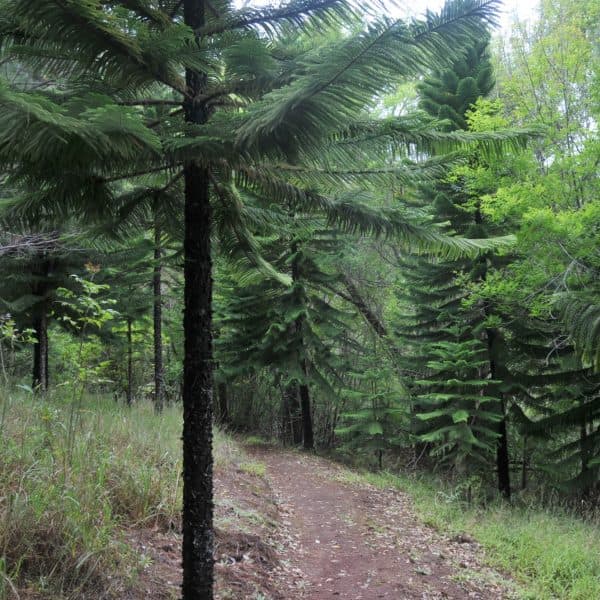
See + Do
Makawao Forest Reserve

See + Do
Haleakalā Crater
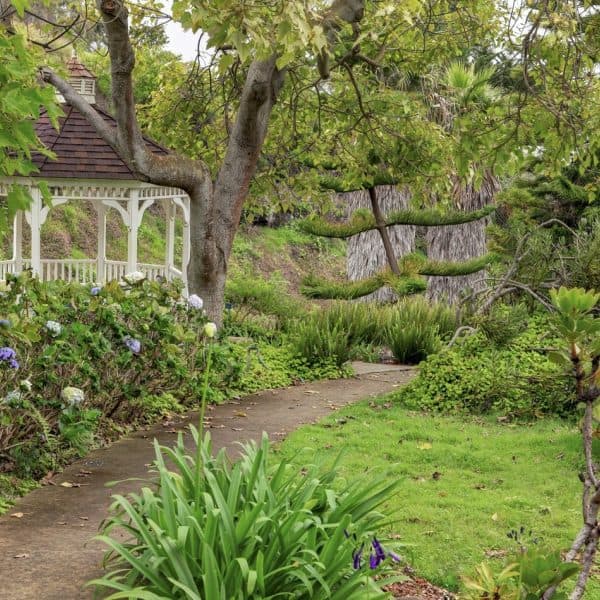
See + Do
Kula Botanical Garden
Features
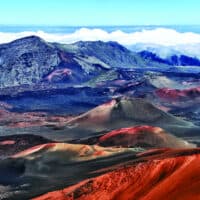
See + Do
Haleakalā & Best of Maui Tour
Upcountry +1
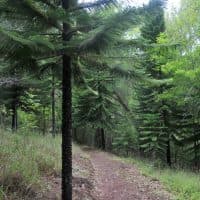
See + Do
Makawao Forest Reserve
Upcountry
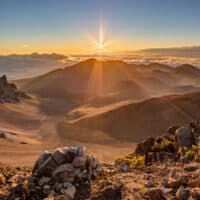
See + Do
Haleakalā Crater
East Maui
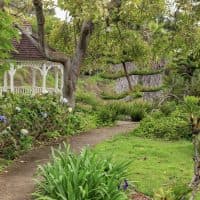
See + Do




